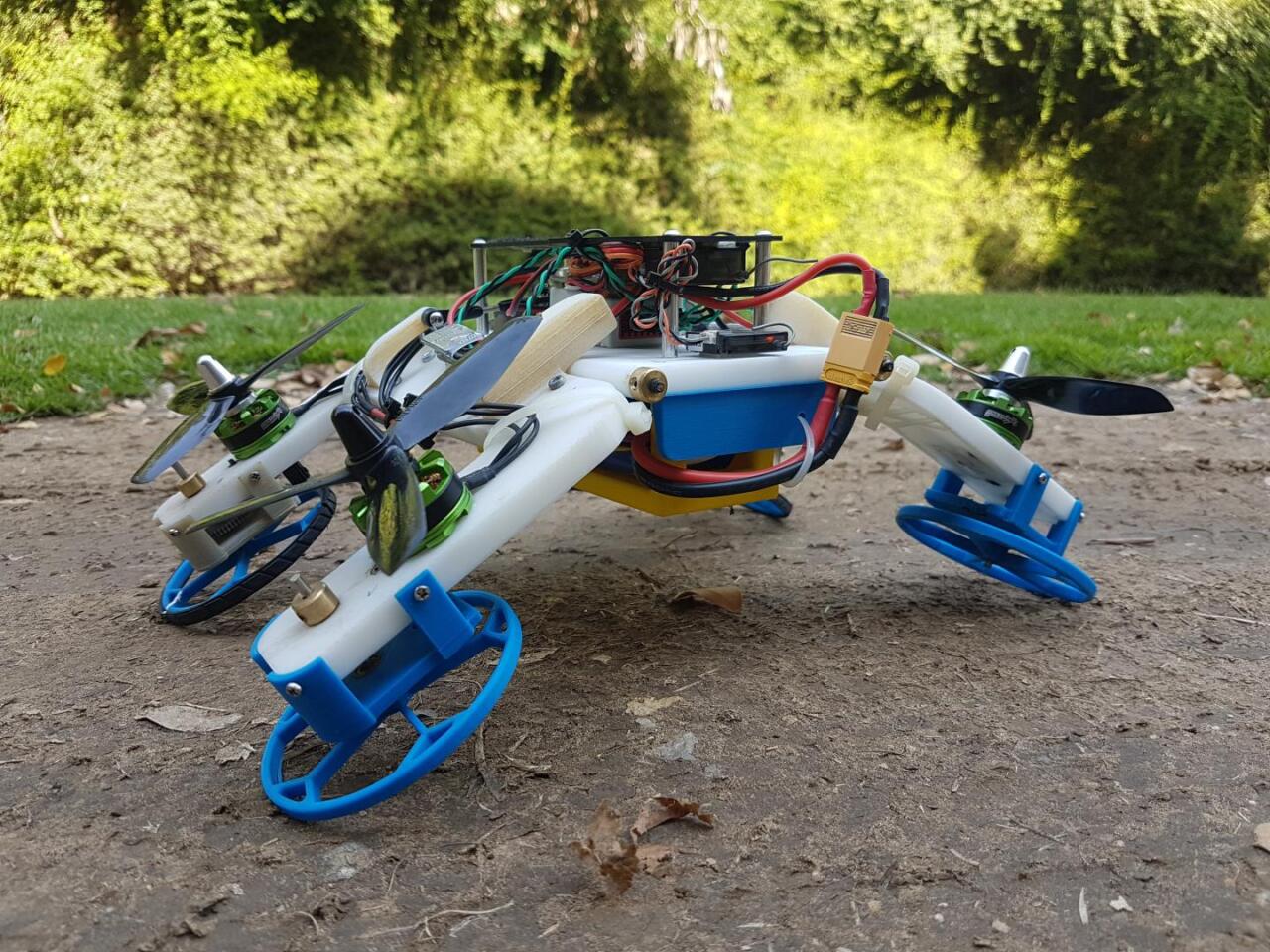We've seen a few versatile drones that can adapt themselves to different modes of transport, with the AquaMav that dives in and out of the water like a seabird turned flying fish being one particularly impressive example. Equally so is a new quadcopter developed at Israel's Ben-Gurion University, which flies like a regular quadcopter but turns its propellor arms into wheels to keep moving once it hits the ground.
The hybrid vehicle has been dubbed the FStar (flying sprawl-tuned autonomous robot) and in drone form functions just like a regular quadcopter, using a set of four horizontal propellors to create upward lift and move in any direction through the air.
But also attached to its propellor arms is a set of four spinning wheels, which are powered by the same set of four brushless motors. With a small swivel downwards of these arms, these wheels lift the drone's body off the ground and enable it to travel like a robotic car, covering up to eight feet per second (2.6 m/s).

Even more impressive is the FStar's ability to adjust the angle at which these arms protrude from its body, anywhere up to 55 degrees. This means that it can effectively raise or lower its body should it encounter an obstacle that it needs to roll beneath, such as a car as demonstrated in the video at the bottom of the page.
In the eyes of the researchers, this array of attributes could see the FStar put to use in a variety of scenarios. With a 20 minute operation time, it could find applications in search and rescue efforts, flying over insurmountable obstacles and then rolling underneath rubble. With a 400 g (14 oz) payload capacity it could be used to deliver small packages, while agriculture, cleaning, maintenance and law enforcement are a few of the other examples offered. The researchers planning multiple versions of the versatile robot to suit different tasks.
"We plan to develop larger and smaller versions to expand this family of sprawling robots for different applications, as well as algorithms that will help exploit speed and cost of transport for these flying/driving robots," says Professor David Zarrouk, who led the research.
You can see the FStar robot in action in the video below.
Source: Ben-Gurion University





